The Amazing Quest of Ernest Bliss (1936)
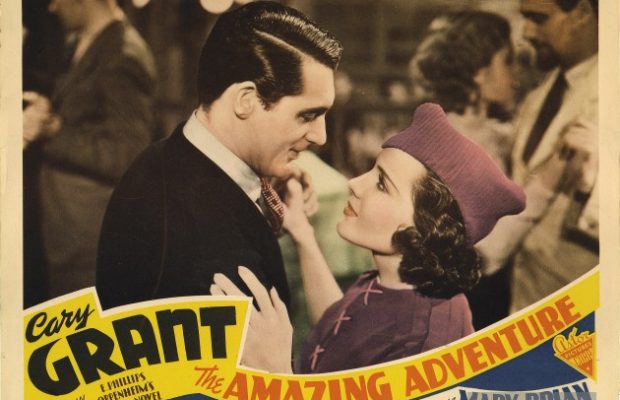
Toronto Film Society presented The Amazing Quest of Ernest Bliss (1936) on Sunday, January 21, 2018 in a double bill with None But the Lonely Heart as part of the Season 70 Sunday Afternoon Film Buff Series, Programme 4.
Production Company: Garrett-Klement Pictures. Theatrical Distribution: United Artists (UK), Grand National Pictures (USA). Producers: Robert Garrett and Otto Klement; Alfred Zeisler. Director: Alfred Zeisler. Screen Play: John L. Balderston, from the novel “The Curious Quest” by E. Phillips Openheim. Cinematography: Otto Heller. Art Direction: David Rawnsley. Film Editor: Merril G. White. Music: Werner Bochmann. Art Director: David Rawnsley. Sound Recordist: A. J. Bronker. Assistant Director: Pat Walker. Dialogue Director: Charles Lincoln. Release Date: February 27, 1937.
Cast: Cary Grant (as Ernest Bliss), Mary Brian (as Frances Clayton), Peter Gawthorn (as Sir James Alroyd), Iris Ashley (as Clare), Charles Farrell (as Scales).
Along with our TFS programmer Barry Chapman, I always thought today’s films would make a good double bill for three reasons. The first being that Cary Grant plays an Englishman living on his home turf and the second reason has to do with those characters and their relationships to wealth and poverty. And lastly, in both films his name is Ernest.
The Amazing Quest of Ernest Bliss is not a staple Cary Grant film. Its director was US born Alfred Zeisler who started his film career in Germany by directing films there in 1924. His repertoire as well included producing, acting and screenwriting. He fled Germany when the Nazis came into power, apparently first heading to France, then to England where he made today’s film, and eventually directing and producing movies in Hollywood.
Cary Grant was enormously pleased with his work in Bliss. Save for occasional flashes of brilliance in the five years and twenty-one movies he made before it, he felt he had not appeared in a feature that fully showed off his unique physical and verbal comedic abilities as much as his particular romantic appeal. Without a tuxedo, murder weapon, period costume, physical affliction, or femme fatale in sight, Bliss finally allowed Grant to give the kind of performance he felt he was capable of, the first true glimpse of what was to become the classic Cary Grant persona of charm, looks, wit and decency.
Mary Brian, seduced by Cary’s charismatic performance, took an immediate liking to him away from the camera as well and responded with genuine affection when Grant developed what resembled a schoolboy’s crush on her.
There is much controversy over Grant’s sexuality, which isn’t anyone’s business but his own, and yet is the subject that intrigues most people about others. Grant had been married to Virginia Cherrill, the actress who is best known for playing the blind girl in Chaplin’s 1931 City Lights. The marriage only lasted a year and Grant didn’t marry again until seven years later when he met heiress Barbara Hutton. Although he may have been in love with Mary Brian during the filming, the relationship never came to fruition. And this is where the controversy comes into play. Cary’s best friend was Randolph Scott and the two had lived together during bachelordom, since meeting on the set of Hot Saturday in 1932. Some biographers say that their relationship went further than a friendship while others claim that Grant was heterosexual, only interested in women. Whatever the reason, Grant and Brian’s relationship, platonic or otherwise, ended at the same time as Randolph Scott’s marriage to Marion duPont Scott, a wealthy philanthropist and thoroughbred horse breeder when the two returned to Hollywood.
Another controversy is with regard to the year Grant reconnected with his mother Elsie. Some say 1938 while others say 1936 during the making of today’s film. As mentioned in the Film Notes, Elsie was institutionalized when Cary was just a boy and he didn’t reconnect with her until adulthood. In Marc Eliot’s biography of Grant, he claims that they finally met with each other, but it was to Cary’s unhappy surprise that he discovered that his mother didn’t exactly remember who he was. She seemed to treat him more like an old acquaintance than her son. He was also disappointed to find that she preferred to stay indoors as much as possible, in the same grimy house in Bristol from which she had been forcibly removed all those years ago, perhaps still believing she was being held in confinement. Although Cary wanted to bring her to America with him, she thought that at the age of 58, to move to a foreign country was a completely absurd notion.
Mary Brian, dubbed “The Sweetest Girl in Pictures” was born as Louise Byrdie Datzler in Corsicana, Texas. Her first role was Wendy in the 1924 Peter Pan starring Betty Bronson in the title role. By the time she made today’s movie, her film career was coming to an end and she turned toward the stage. She had a long life, dying on December 30, 2002 just shy of her 97th birthday.
Sources: The Pictorial Treasury of Film Starts: Cary Grant by Jerry Vermilye (1973); Cary Grant: A Biography by Marc Eliot (2004); IMDb
Introduction by Caren Feldman
Plot:
Something’s amiss with Ernest Bliss. Despite the fact the he is “rolling”, he can’t eat and he can’t sleep; he doesn’t do anything, yet he’s always tired. The best diagnostician in London tells him his problem is his idler lifestyle funded entirely by the £2,000,000 his late father left him. His prescription is that Ernest attempt to live solely off the fruits of his own labour for a year, even if it means going hungry from time to time. A £50,000 wager on his failure to do so insults Bliss, who takes the bet, but ends up winning something even more valuable.
History:
The film is known by several titles, none of which are The Curious Quest—the name of the Oppenheim novel upon which the film is based. Its original British release in 1936 was under the title The Amazing Quest of Ernest Bliss, but it was also known by titles as bland as A Rich Young Man, and even The Amazing Adventure. When released in the US the following year, it was retitled Romance and Riches and cut by two reels (Buehrer 66). Despite this, Joshua Lowe of Variety still complained: “There is a mechanical progression in the photographic sequences which lacks credence, but this may be fixed by cutting, thereby speeding up the movement toward the story’s culmination” (Deschner 105).
The fickleness of the title was perhaps an attempt to cloak the picture’s identity as a remake. The story was originally filmed as a five-part serial in 1920 with the title The Amazing Quest of Mr. Ernest Bliss, starring British silent darlings Henry Edwards and Crissy White. It was re-released as a feature film in 1921, but by 1924 the film’s production company, Hepworth Picture Plays, had gone under, and their entire negative cache was sold and melted for silver. The BFI has placed it on their “75 Most Wanted” list of lost films. Only 85 production-stills remain in the hands of a private owner.
Grant’s portrayal of Bliss was given under conditions that were anything but blissful. During the production of Sylvia Scarlett (also released 1936) Grant learned that his father’s heath was failing rapidly. Coincidentally, the offer to go to London and shoot Bliss at Elstree came around the same time, and Grant pounced on the opportunity to work in relative closeness to his dying father. Unfortunately, Elias Leach died one week into the shooting of Bliss, aged 63. Grant (born Archie Leach, by the way) was present at the funeral, and gave the eulogy in which he named his father as “his first hero, and seemed prepared to downplay his troubled childhood in order to mourn” (Curtis 24). As Chuck Ashman and Pamela Trescott report in Grant’s biography: “He stood by the graveside in the Bristol churchyard to say goodbye to the man he’d seen so briefly since he’d become and adult. In his eulogy, Archie Leach/Cary Grant said of his father, ‘he was a wise and kindly man, and I loved him very much’” (82).
Sources: Buehrer, Beverley Bare. Cary Grant: A Bio-Bibliography. Greenwood Pr., 1990;
Curtis, Jenny. Cary Grant: A Life in Pictures. Metro Books, 1998;
Deschner, Donald. The Films of Cary Grant. Citadel Press, 1973;
Trescott, Pamela, and Charles R. Ashman. Cary Grant. W. H. Allen & Co., 1987;
“BFI Most Wanted.” British Film Institute, www.bfi.org.uk/explore-film-tv/bfi-national-archive/archive-projects/bfi-most-wanted
Notes by Oliver Kraeker

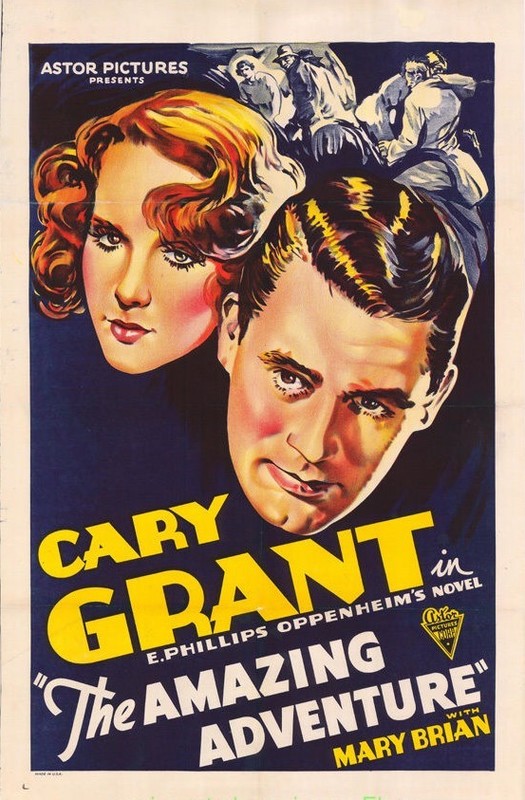
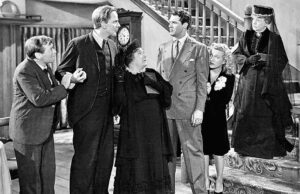
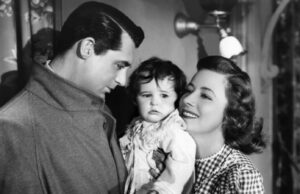
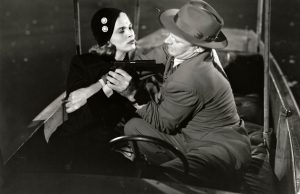






Leave a Reply